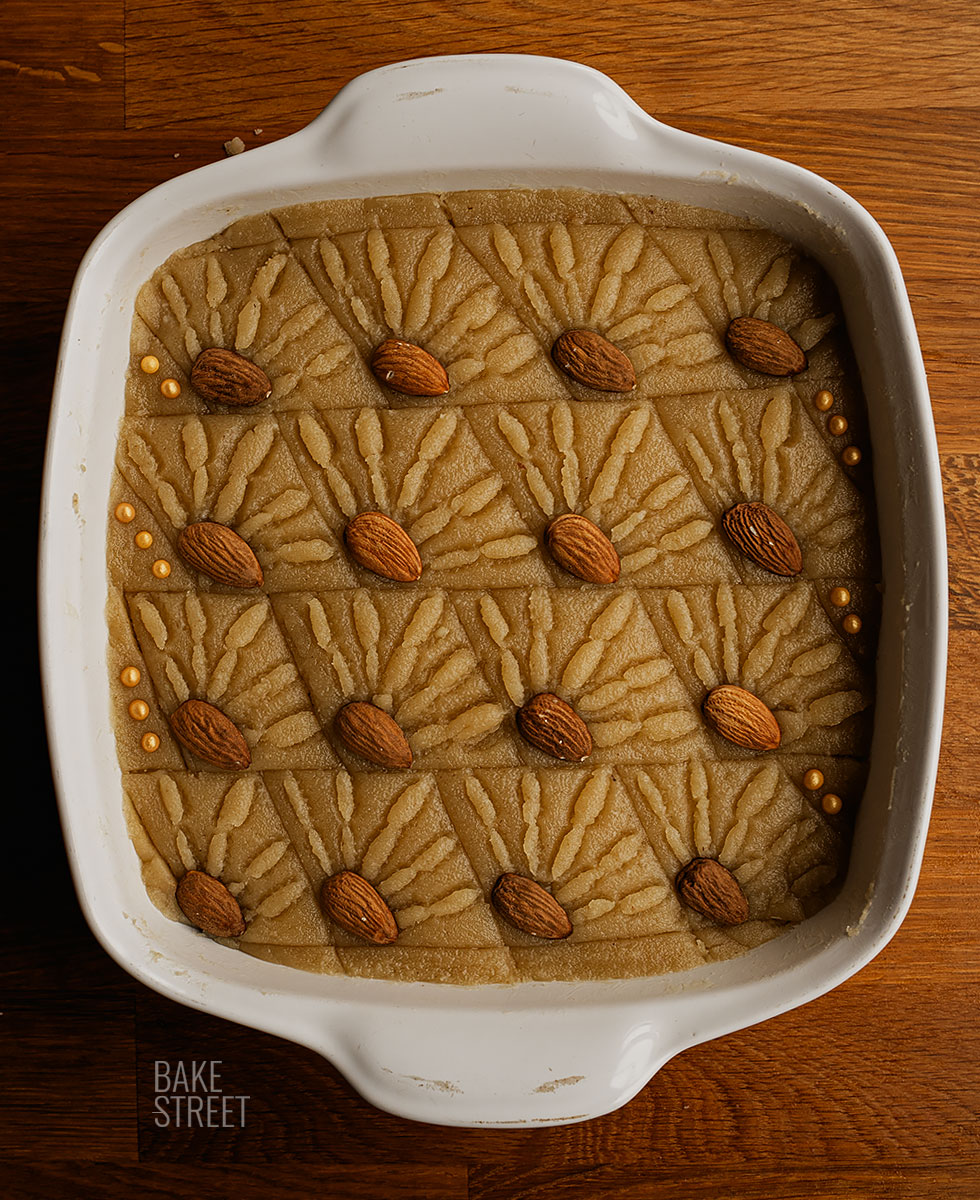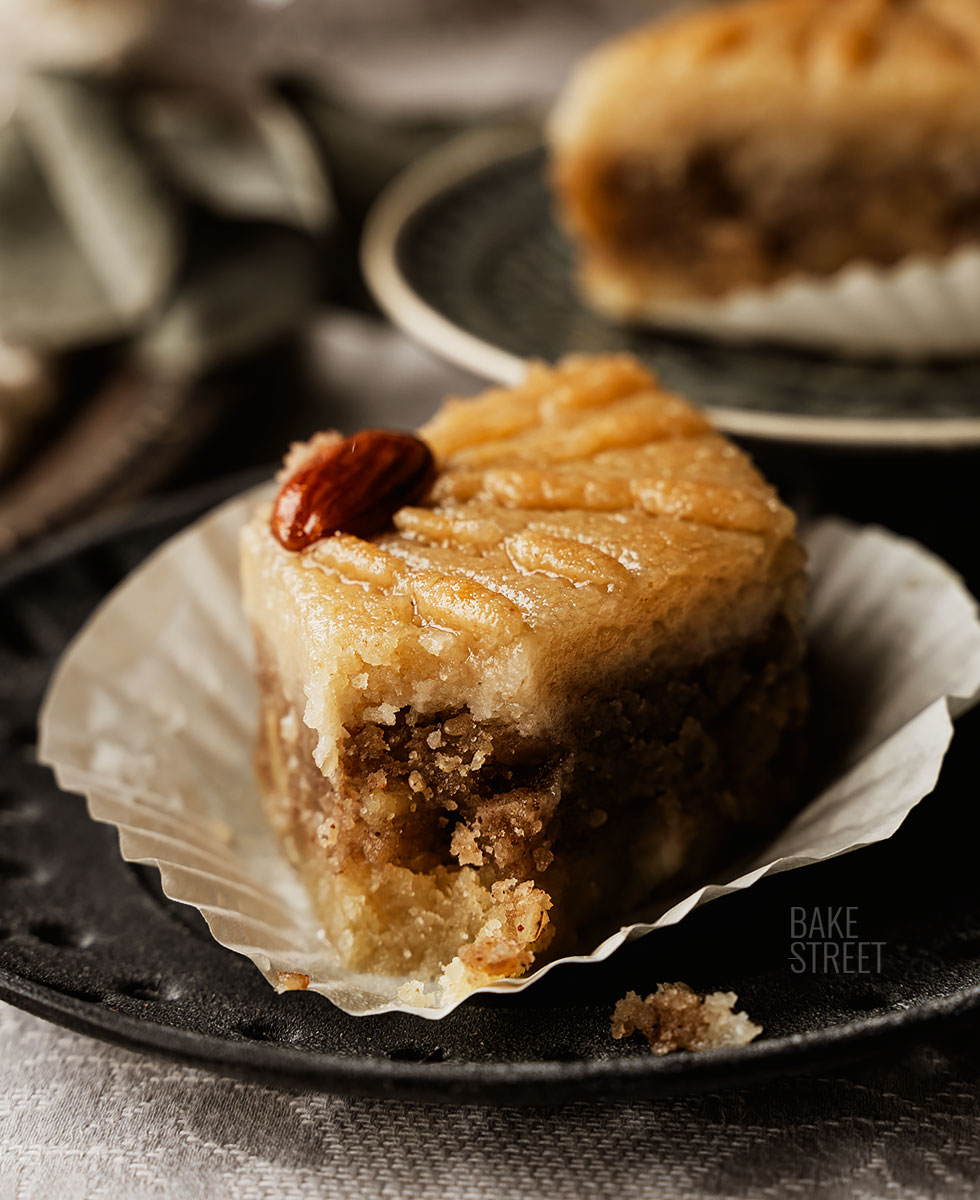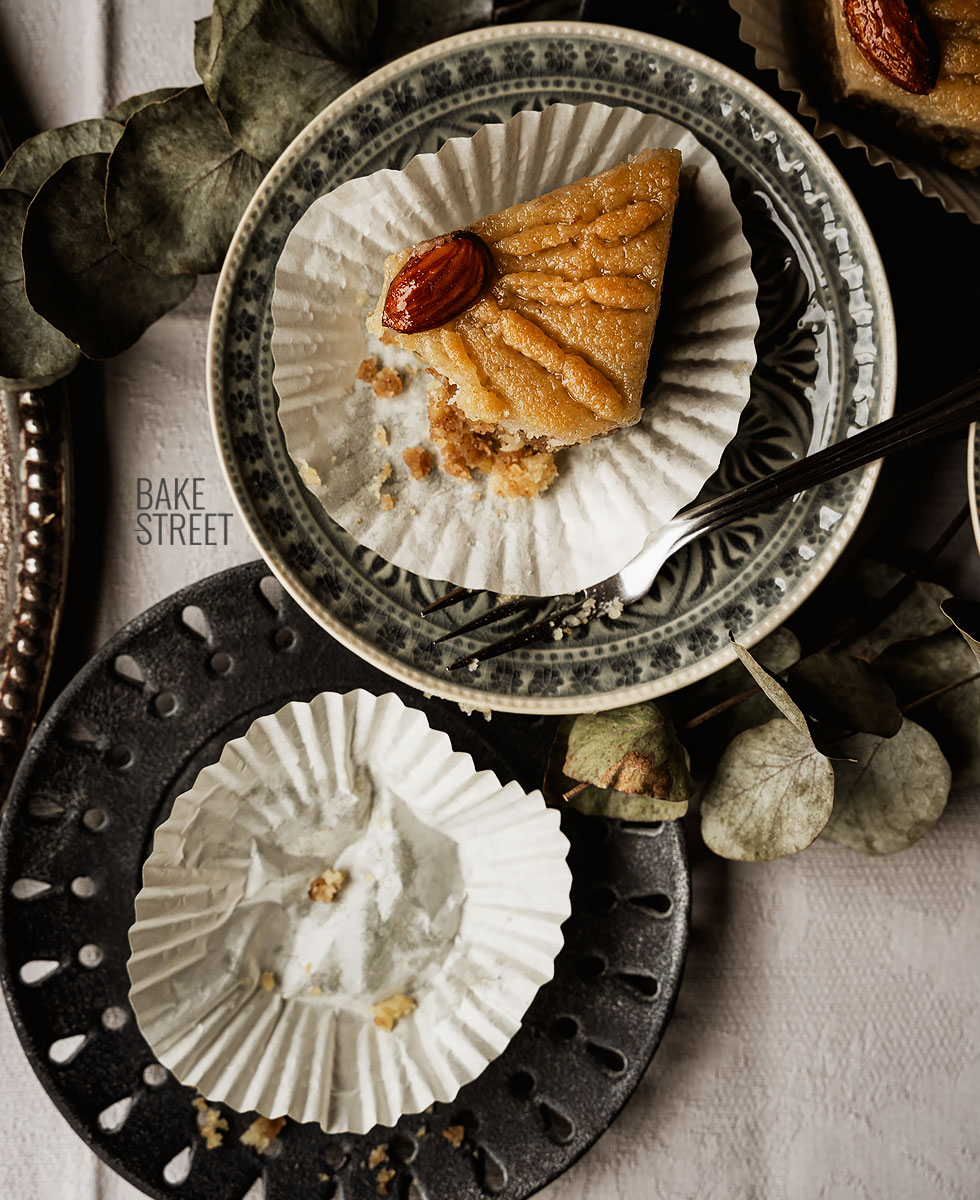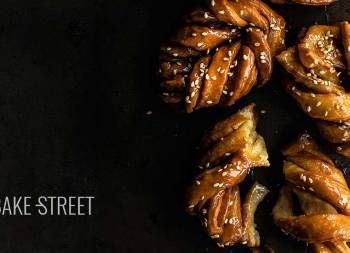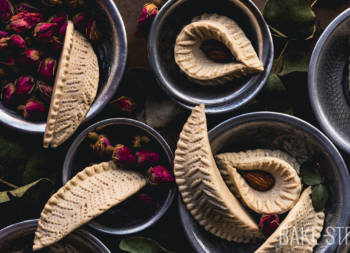
Makrout Sniwa style Baklava
Before kicking off the Christmas recipes, I wanted to share with you this delicate traditional sweet from the Maghreb gastronomy. Makrout Sniwa style Baklava. I love this kind of sweet treats, I have always liked them, I just try to make them once in a while because of their high sugar content. That’s exactly why they are so amazing, hahaha. Well, not forgetting the nuts which are a very important part of the preparation.
Something I really like about this recipe, apart from the obvious for all of us, is that it is a recipe that can be prepared in a very short time. Ideally we should make it the day before to allow it to rest overnight in the lemon syrup. But if this is not possible, we can prepare it in the morning and enjoy it amazingly in the afternoon.
Makrout origin.
Maqruḍ (مقروض) or maqruṭ (مقروط), also transcribed as makrud or macrud (in French, macroudeor makroud) is a diamond-shaped Maghrebi pastry that has its roots in Berber culture. This cake consists of a layer of wheat semolina filled with date, fig or almond paste, among other fillings, which is fried in oil and then dipped in a syrup of honey and orange blossom water. Other versions are baked instead of fried.
Macrud is especially popular in Algeria and Tunisia, although they are also popular in neighbouring countries such as Tripolitania, in western Libya, a region strongly influenced by Tunisian culture, and there is an equivalent in Maltese cuisine: maqrut. In Morocco, it is found especially in Ushda and Tetouan, where it was introduced by Algerian immigrants, and in Fez, where it arrived thanks to Tunisians who came from Kairouan in the 9th century.
Traditionally, it is prepared for sacred occasions such as Eid al-Fitr, the Feast of the End of Fasting, a religious festival in the Islamic tradition that marks the celebration of the end of Ramadan and covers the first three days of Shawwal.
As part of a culinary tradition, macrud has also become common in countries with a large population of Algerian or Tunisian origin, especially in France.
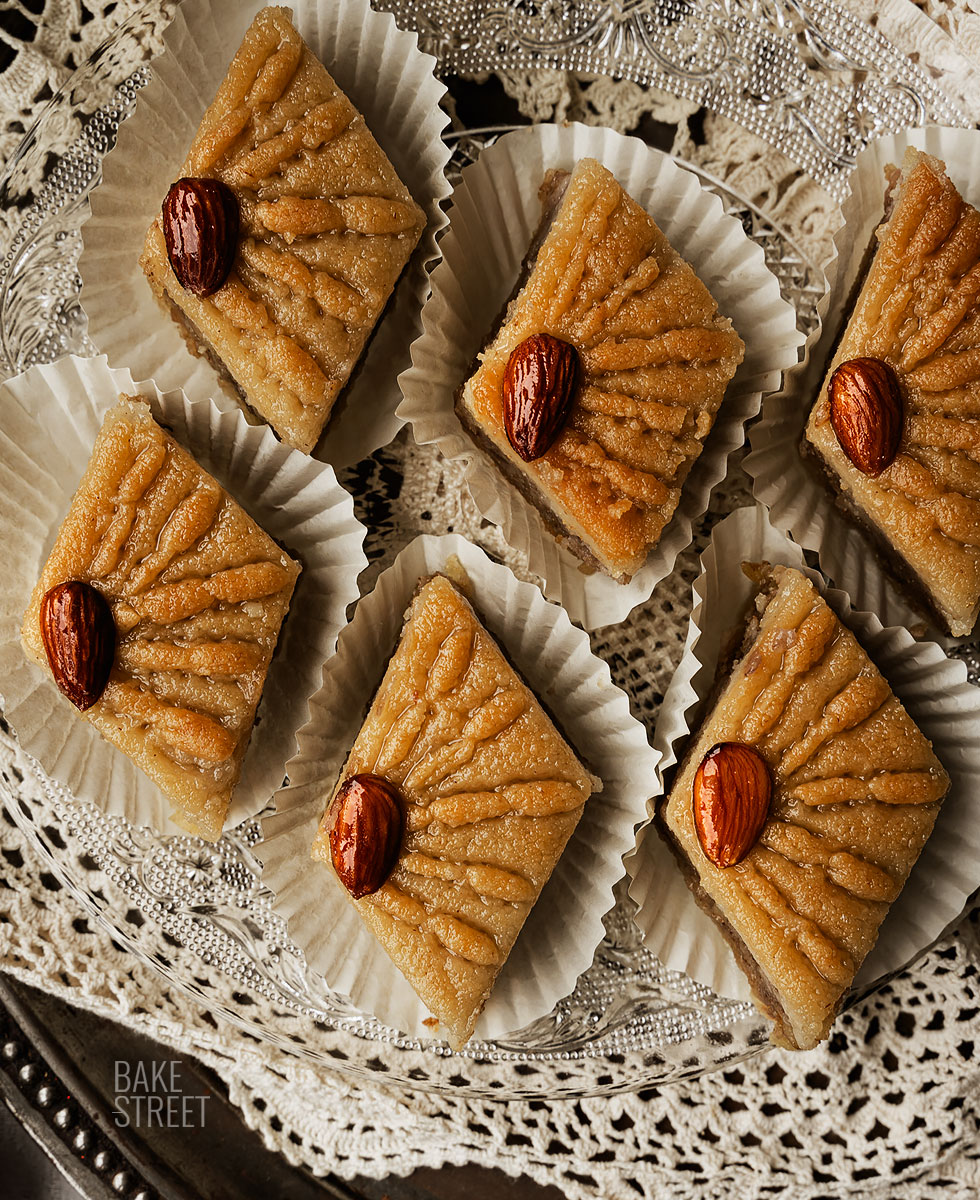
Other sources claim that its origins lie in the oases of Mzab and the steppes of Setif in Algeria. Others share that its history is related to the city of Kairouan, the spiritual capital of Tunisia, a city that hosted the first national makroud or makrout festival on 20 May 2008.
Makrout types.
This sweet, like many other traditional classics, has different variations depending on the region. In the Algerian Sahara it is made with semolina and dates soaked in syrup; in Oran, cinnamon and green aniseed are added; while in Algiers, almonds are used and sprinkled with icing sugar.
Algeria has the widest variety of maqruḍs and among the most prominent are the following:
- Maqruṭ tmar, this speciality originates from the ‘gates’ of the Sahara, but is consumed throughout the country. It is made with semolina and dates and flavoured with cinnamon, cloves and orange blossom water. In this case, it is fried or baked and then moistened with honey or homemade syrup.
- Maqruṭ lassel, a speciality from the steppes and plateaux, mainly in Sétif. It is made from semolina and filled with ground almonds, cinnamon and orange blossom water.
- Maqruṭ al-luz (اللوز, «almond»), o maqruḍ msaker, (سكر , «sugar»), a speciality which, as the name suggests, is made mainly with ground almonds, sugar, eggs and lemon zest.
- Maqruḍ al-kusha (in French, makrout au four) a Constantine speciality, prepared in the towns of eastern Algeria. It is made from semolina and dates and is baked in a dry oven. In Algeria, it is considered ‘the ancestor of maqruḍ‘.
- Maqruṭ wahrani is a variant from the city of Oran containing only spiced semolina.
- Maqruḍ al-dgig, A speciality originating in the city of Suq Ahras. This maqruḍ differs from the other variety in that it is made from flour, hence its name.
- Maqruḍ el mdawer, A speciality of the so-called modern Algerian pastry which, as the Algerian Arabic (mdawer) indicates, is a variant of the rolled maqruḍ. The filling consists of butter and date paste.
- Maqruḍ bil kermouss, the filling is made with a paste of fresh figs, caramel and vanilla.
- Mkirat, an Algerian speciality from the city of Tremecén that is prepared with a large quantity of eggs, peanuts and toasted sesame seeds. This variety is baked and then soaked in honey and lemon syrup.
- Maqruṭ malah, is a savoury variant made from potatoes, spices such as ras el hanut and herbs such as turmeric, cumin, oregano and thyme. The filling often consists of chicken marinated in a sauce made from garlic, tomato, paprika and olive oil. It is often garnished with fresh sesame seeds.
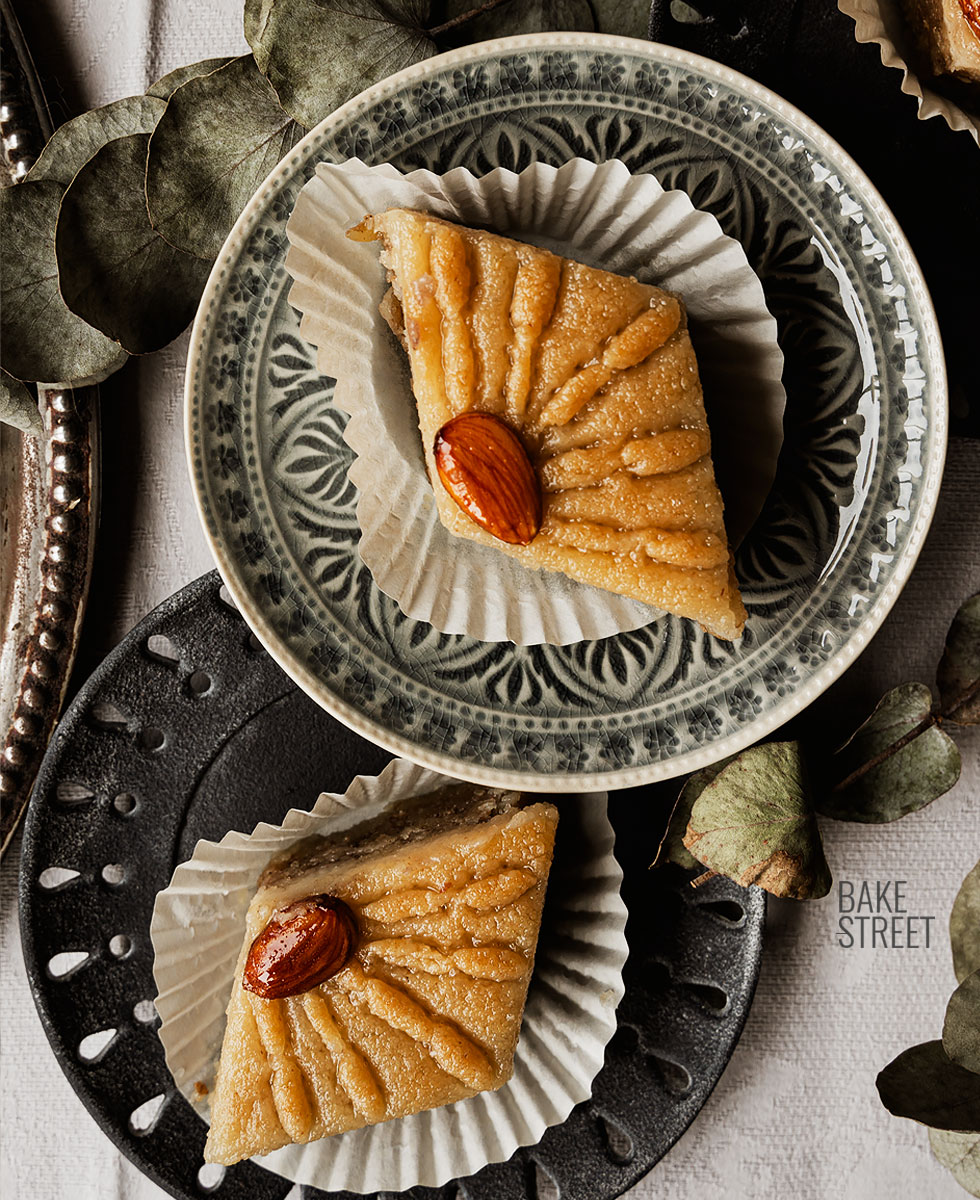
Making Makrout Sniwa.
So, where is the variety I have left you? Well, to be honest, I followed the recipe of this woman who shared her recipe on her YouTube channel. It was difficult for me to know the name of this sweet, in fact when I made it I wasn’t sure what it was called.
But, when I looked for the origin, similar preparations and processes… I came up with the term “Makrout” and, from there, I started to research and work more on this sweet. I found that the variety I leave you with, as well as being more flexible in terms of ingredients, has an appearance reminiscent of the famous baklava.
There are other varieties of baklava such as this Baklava Bird Eye, Chamiat or Nidos de Ruiseñor. In biscuit format with nuts and syrup you can enjoy Kalburabasti or Tarka Tatlisi.
Now that I am clear about all the versions that exist, as well as all the names, the next recipes I will leave you with will be more focused on the traditional formats. Because, yes, there will be many more like this one.
The process is very simple to carry out and will not give us much work to do in the kitchen. As simple as mixing, dividing the dough, rolling out, decorating and baking. In just under an hour we will have everything ready. Of course, we must let it rest with the syrup so that it moistens very well.
Recipe Makrout Sniwa style Baklava
DOUGH:
- 540 g bread flour
- 220 g semolina
- 1 large egg
- 100 g unsalted butter, room temperature
- 220 g sunflower oil
- 1 tablespoon apple cider vinegar
- 150 g heavy cream
- 2.2 g baking powder
- pinch of salt
FILLING:
- 150 g walnuts
- 10 g toasted sesame seeds
- 3 g cinnamon powder
SYRUP:
- 250 g sugar
- 400 g water
- one lemon slice
DECORATION:
- natural almonds with skin
- golden sprinkles
MATERIAL WE WILL NEED AND SHOWN IN THE VIDEO:
- bowls
- whisk
- silicone spatula
- marble rolling pin*
- teflón sheets
- Emile Henry mold 27 x 23 x 7 cm*
- cooling rack
- mortar
- tweezers or crimper
- saucepan, mine is this DeBuyer*
- ladle*
- saltcellar Emile Henry*
*You have a 5% discount on the website Claudia&Julia using this code BAKESTREET. Delivers throughout Europe.
Instructions
Prepare the dough for Makrout Sniwa.
- In a large bowl, add the egg, butter, cream, oil and vinegar. Whisk until homogeneous mixture is obtained.
- Add the semolina and mix again until completely blended.
- Finally, add the flour all at once and mix until a uniform dough is formed. It is not necessary to knead a lot or to develop the gluten, just knead until there is no flour left.
- Divide the dough into three equal parts, weighing about 430 g each.
Prepare the filling.
- In one part of the dough, add the cinnamon and sesame seeds. Mix until all the ingredients are combined.
- Using a pestle and mortar, lightly grind the walnuts and add them to the dough with the spices.
- Mix until a uniform dough is formed.
Assemble Makrout.
- Grease a baking tin with butter, mine is 27 x 23 x 7 cm.
- Roll out the first dough, I recommend rolling it out between two sheets of teflon to make the handling process much easier. Use a rolling pin for this step.
- Place the dough in the mould and adjust it to the dimensions of the mould. Using a small rolling pin, smooth the surface to achieve an even volume.
- Roll out the second dough, the one for the filling (with nuts and spices). Proceed in the same way as the first dough.
- Place the dough in the mould and adjust to the dimensions of the mould. Using a small rolling pin, smooth the surface to achieve an even volume.
- Finally, roll out the third dough in the same way as the other two.
Decorate Makrout.
- Using a sharp knife, cut the whole piece as shown in the video. This step will help you to divide each cake easily.
- With the help of a pair of tweezers or crimper, texture the surface. In my case I have left you with this suggestion, but you can do any other you prefer.
- Don't worry if it's not perfect, everything we do with love can only have one result and it's wonderful.
- Finally, decorate each portion with a natural almond with skin and, if you wish, golden sprinkles.
- Refrigerate for 2 hours, this step will help the cake to keep its shape in perfect condition after baking.

Prepare syrup.
- Add all the ingredients in a saucepan. Place over medium heat and bring to the boil. The sugar should be completely dissolved.
- Once it comes to the boil, reduce to medium heat, cook for 5 minutes and turn off the heat. Allow to cool completely.
- NOTE: The syrup should be prepared while the cake is baking.
Bake.
- Preheat oven to 347ºF/175ºC, heat up and down.
- Bake the cake, at medium-high on the rack positions, for 45-50 minutes. You will notice that the surface turns a nice golden colour.
- Take out, leave to stand for 2 minutes, then generously soak in the syrup. In the first batch add 3 ladles.
- Leave to stand until all the syrup is absorbed and then pour in a little more. The cake should be left to moisten very well.
- Cut the portions along the marked lines and place them in the blondies.
- Serve.

Notes
- If you don't have semolina, you can use all in flour. I tried adding ground almonds instead of semolina and the result was wonderful.
- Remember that this dough should not be kneaded excessively, just until you get a dough that is amalgamated.
- In my case I have used the mould shown here, but these quantities are also suitable for an 18 x 25 cm mould or tray.

- If you use a larger tin, the baking time will be shorter.
- You can vary the fillings, using date paste and nuts if you prefer.
- If you don't have tweezers or a crimper, you can decorate the surface by marking shapes with a small biscuit cutter or texturiser.
- The lemon in the syrup can be replaced with orange blossom water.
- I advise you to add the syrup little by little and wait for the cake to absorb it so as not to add more than it needs.
- It can be kept refrigerated for 8-10 days.

For those of you who love this type of sweet, with nuts, moist and syrupy textures, you can't miss this Makrout Sniwa or Makrout Sniwa style Baklava. I don't need to tell you how incredibly delicious they are because this kind of sweets present their own.
If you want to prepare a sweet in advance to serve with your coffee, this is definitely a great option that will make you look like a king and queen.
I wish you a wonderful Sunday!
Lots of love,
Eva
Sources:David Seb Cab, Wikipedia
This post contains affiliated links.
